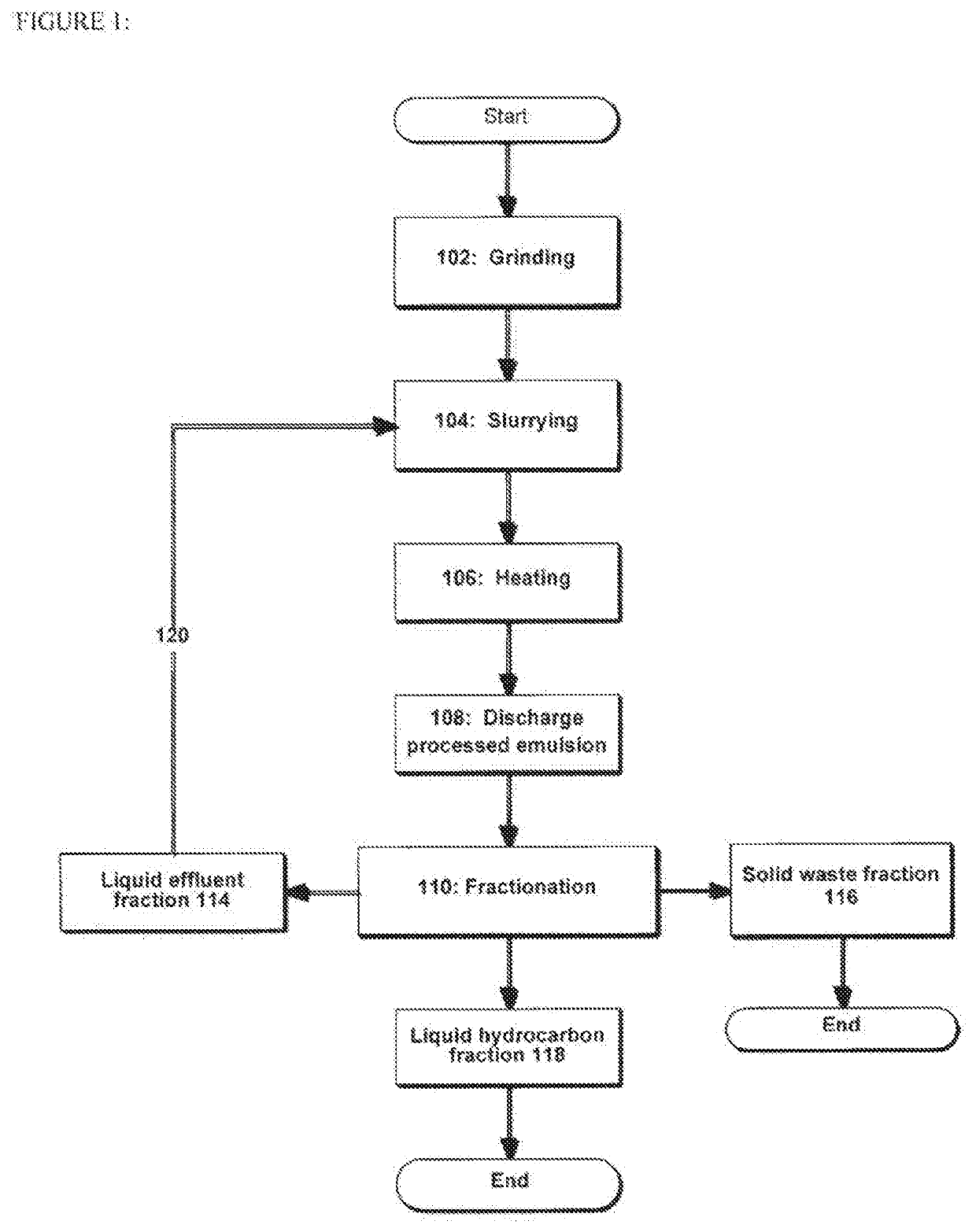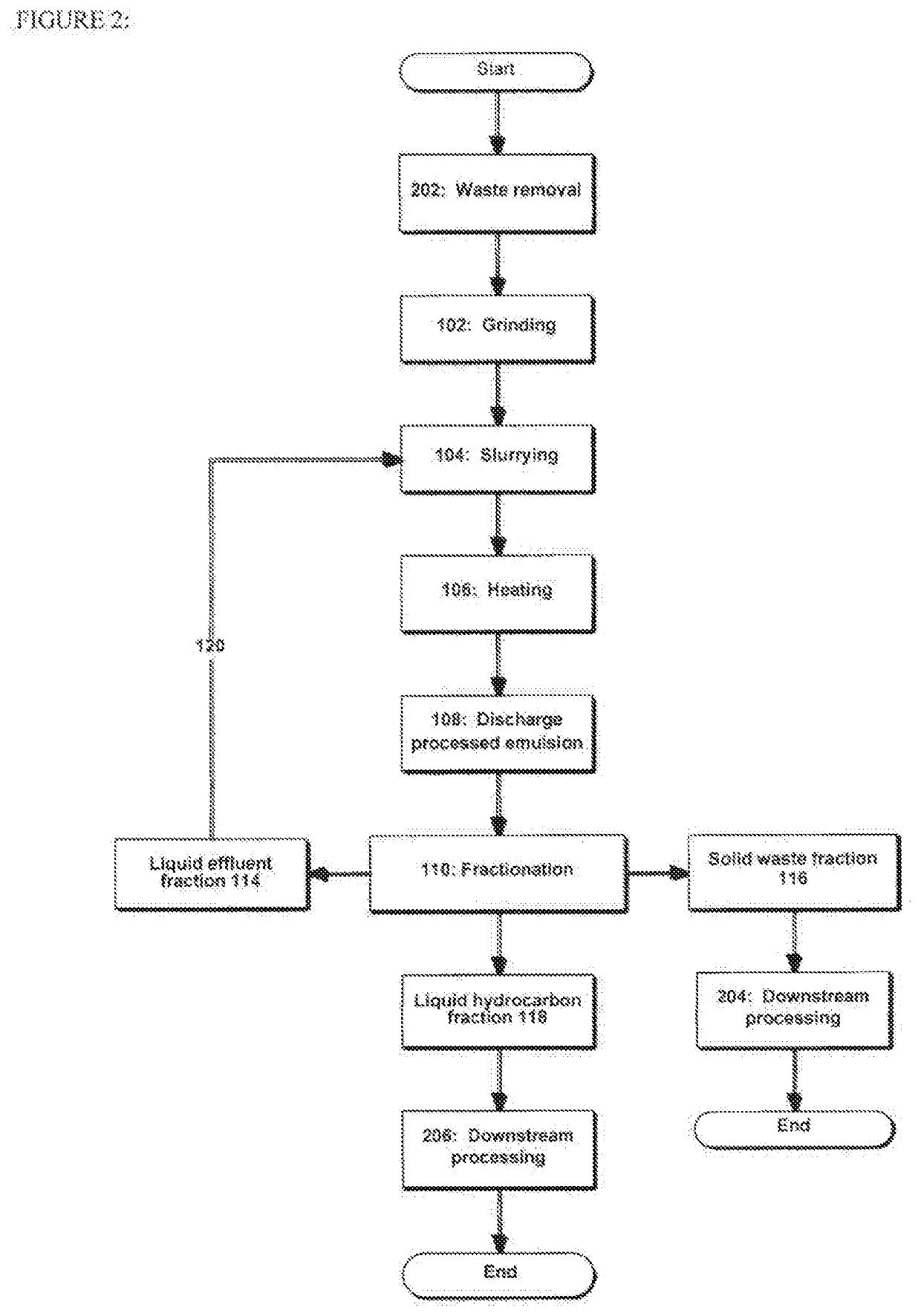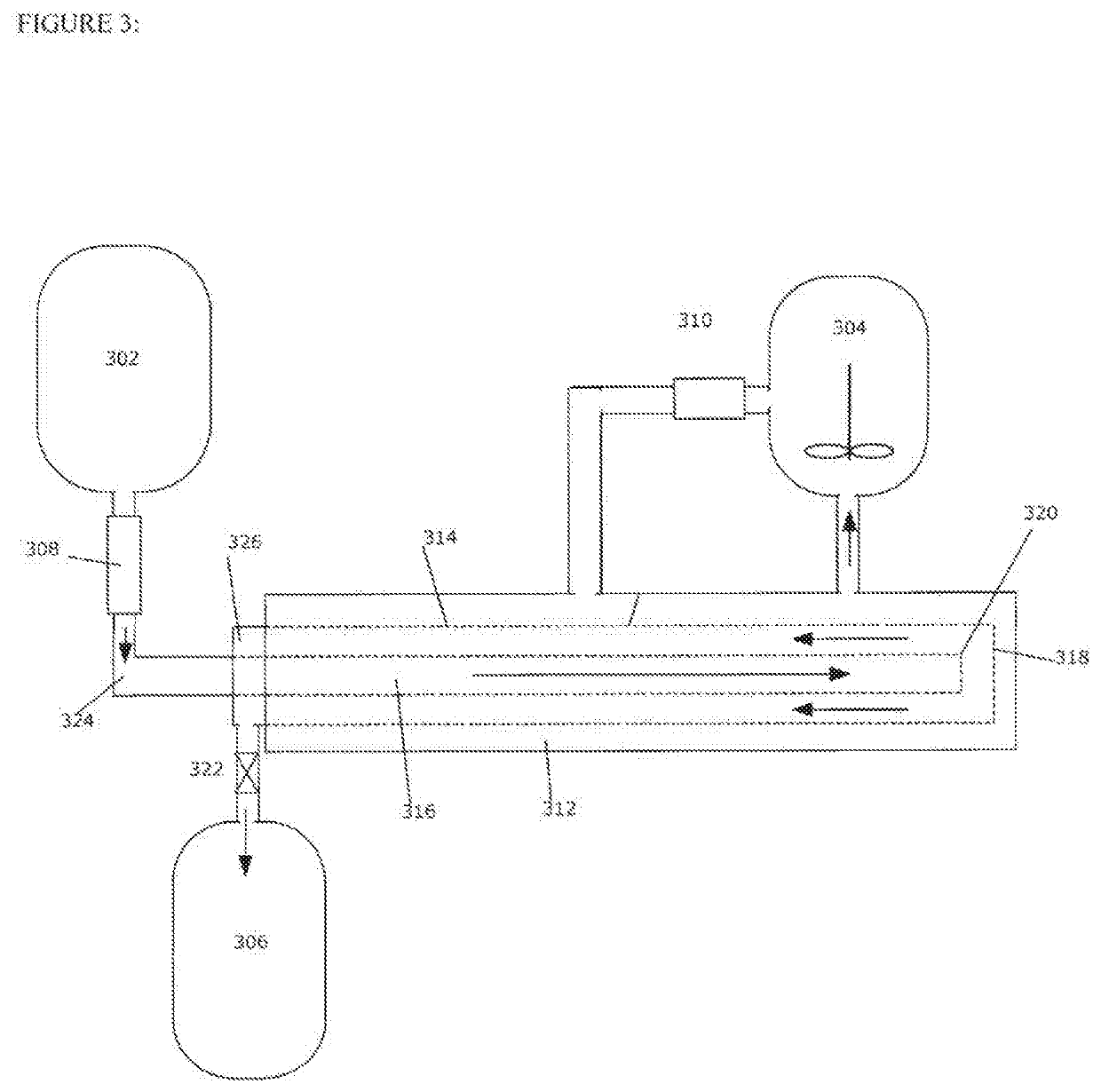Extraction of liquid hydrocarbon fraction from carbonaceous waste feedstock
- Summary
- Abstract
- Description
- Claims
- Application Information
AI Technical Summary
Benefits of technology
Problems solved by technology
Method used
Image
Examples
Embodiment Construction
[0047]As outlined above the general focus of the present invention is to provide a novel method of extraction of a liquid hydrocarbon fraction from carbonaceous waste feedstock such as municipal solid waste, which allows for the recovery of a liquid hydrocarbon fraction from carbonaceous waste feedstock with minimal waste removal, and without the need for a first bio-consumption or bio-processing step using algae or the like. Processing of such a waste feed stream in a slurry comprised of particulate or ground carbonaceous waste feedstock and recycled liquid effluent fraction from the process minimizes the need for the use of clean water in processing.
[0048]Overall the method of the present invention is a method of hydrothermal liquefaction, comprising the creation of a feedstock slurry, by combining carbonaceous waste feedstock which is ground to a selected particle size with slurry fluid as required to yield a feedstock slurry of a desired moisture content and consistency. The fee...
PUM
| Property | Measurement | Unit |
|---|---|---|
| Temperature | aaaaa | aaaaa |
| Temperature | aaaaa | aaaaa |
| Fraction | aaaaa | aaaaa |
Abstract
Description
Claims
Application Information
 Login to View More
Login to View More - R&D
- Intellectual Property
- Life Sciences
- Materials
- Tech Scout
- Unparalleled Data Quality
- Higher Quality Content
- 60% Fewer Hallucinations
Browse by: Latest US Patents, China's latest patents, Technical Efficacy Thesaurus, Application Domain, Technology Topic, Popular Technical Reports.
© 2025 PatSnap. All rights reserved.Legal|Privacy policy|Modern Slavery Act Transparency Statement|Sitemap|About US| Contact US: help@patsnap.com



